Thinking about giving your snake plant a stylish twist? Here’s how you can train it to grow in a spiral or circular shape!
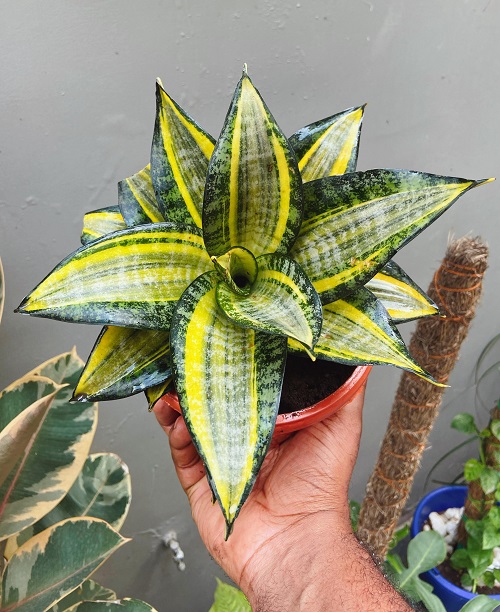
One of the most popular and sought-after succulents, the snake plant is not just low-maintenance and hardy but can also become a beautiful statement decor piece! But if you are confused about how to make that happen, here’s a guide on how to make a snake plant grow in a spiral or circular shape.
How to Make a Snake Plant Grow in a Spiral or Circle Shape
1. Start with the Right Plant
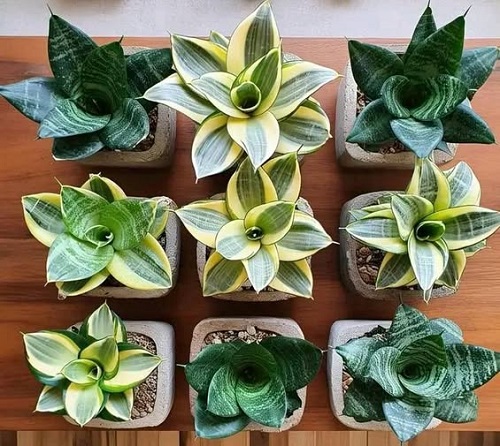
Before trying to get an already mature snake plant to suddenly start growing in a spiral, consider getting a younger plant of the right variety. The leaves of older plants are stiff and can break if you bend them too much.
Plus, since the Sansevieria genus is quite large, you will find enough cultivars that have flexible leaves or ones that already have leaves growing in rosettes or a spiral. Varieties like Sansevieria trifasciata ‘Laurentii’ or ‘Zeylanica’ work perfectly for this purpose. Moreover, you will love growing the ‘Hahnii’ variety that quite resembles a cup-like shape.
Also, pick a plant with compact, symmetrical growth. It’ll give you a head start when it comes to shaping.
2. Get a Support Frame or a Trellis
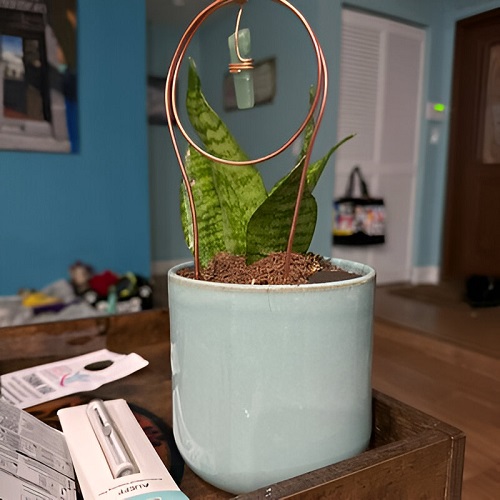
Now comes the fun part—training the plant. But don’t just start bending leaves by hand. You’ll need a spiral or circular frame (think of it like a plant gym!). You can easily find pre-made plant training frames, or even DIY one using sturdy wire or a reshaped tomato cage.
Push the central stake of the frame into the soil, close to the plant’s base. Be gentle to avoid damaging the roots or leaves. The frame should feel snug and steady enough to support the plant’s upright growth.
3. Shape Your Plant
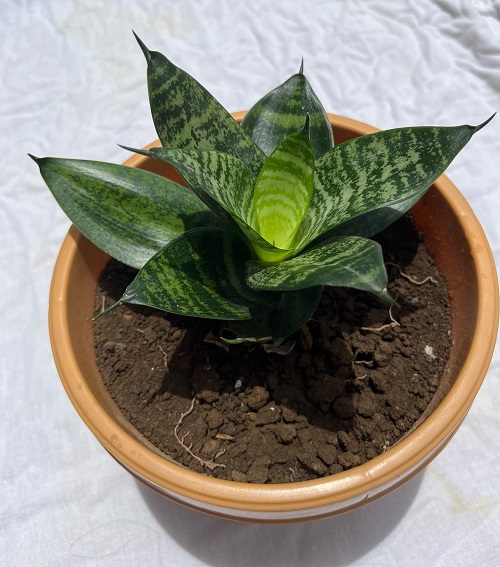
We have officially come to the good part now, which is shaping! Gently bend the leaves in the direction of your spiral or circle. Don’t rush this step; snake plant leaves can snap if forced.
Use soft plant ties like Velcro or foam-covered wire to secure them without cutting into the leaves. The trick is to guide the plant gradually.
Begin with the longest, most flexible leaves first by tying them to the frame from the base up. You should attach the ties at different heights so that they provide even support and help create a natural shape.
4. Encourage Even Growth
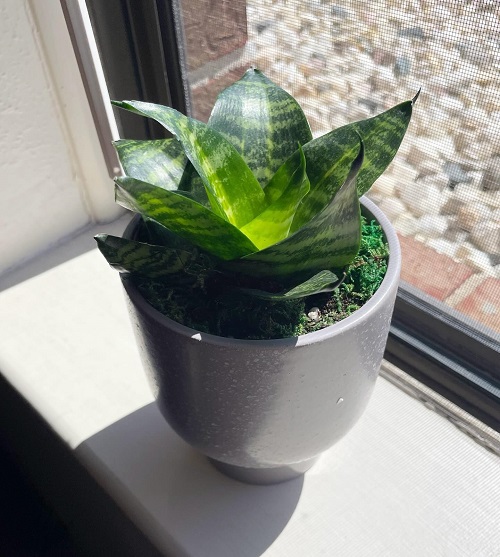
After you are done with your handiwork, you will need to take a moment and observe to ensure that everything is in place. Over the next few weeks, you will need to monitor your snake plant’s growth and see if any ties need adjusting.
Besides the ties, pay attention to the lighting situation. This means that you need to rotate your plant regularly so that all sides get equal light and grow evenly instead of leaning in one direction.
Since snake plants grow a little slower, especially indoors, you must be patient. Expect to keep those ties on for a few months before seeing a noticeable spiral shape.
Pro tip: If your home’s air is dry, give the plant a light mist in the mornings to help keep the leaves flexible.
5. Taking Care of the Basics
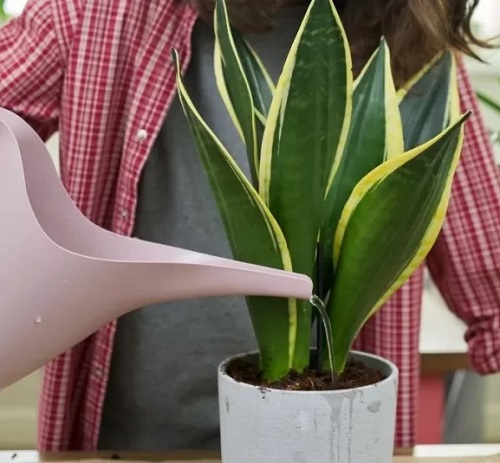
While shaping, don’t forget the basics. Place your plant in bright, indirect sunlight, water only when the soil is dry (every 2–4 weeks), and make sure it’s in a well-draining mix. A little fertilizer during the growing season can also help your plant develop strong, flexible leaves. It’s pretty simple—healthy leaves shape better.
During spring and summer, feed it once a month with a balanced fertilizer, diluted to half strength. And avoid overwatering, as soggy soil leads to weak roots and floppy leaves, which definitely won’t hold a spiral!
6. Gradually Removing Support
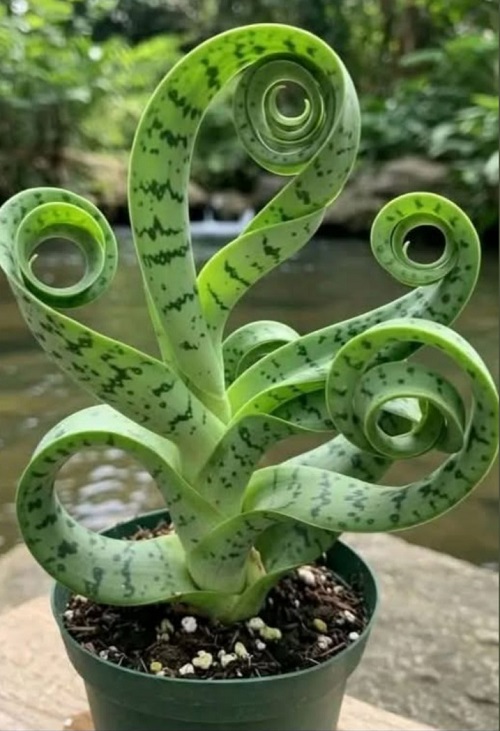
Once your plant starts holding its shape naturally, you can remove the ties and frame little by little. Don’t rush this step; let your plant adjust and grow into its new form. Before you know it, you’ll have a gorgeous spiral or circular snake plant that’s sure to impress anyone who sees it.
Just keep an eye out for new pups—they often mimic the mother plant’s shape. Who knows? You might end up with a whole family of spiraled snake plants!
So these were all the steps on how you can make your snake plant grow in a circular or spiral shape. Try out our methods and let us know how it goes for you in the comments below!







